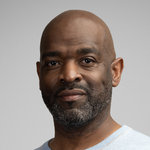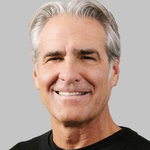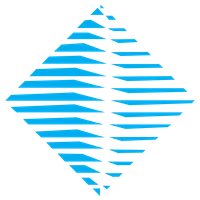
Nike Inc
NYSE:NKE

Nike Inc





In the mid-1960s, two visionary individuals – Phil Knight, a dynamic track athlete, and Bill Bowerman, a dedicated track coach – set in motion a venture that would transform into a global icon known as Nike, Inc. Initially operating under the name Blue Ribbon Sports, the company began by distributing Japanese-made footwear within the United States. The turning point came in 1971, when Nike unveiled its own line of shoes adorned with the now-famous Swoosh logo, symbolizing speed and movement. By leveraging innovative designs and endorsing charismatic athletes, such as Michael Jordan, Nike rapidly gained a foothold in the competitive athletic footwear and apparel market. The core of Nike's strategy has always been a relentless focus on branding, innovation, and strategic marketing, firmly positioning itself as a leader in this dynamic industry.
Today, Nike stands as a titan of the global sportswear industry, boasting an expansive portfolio that stretches beyond footwear to include apparel, equipment, and accessories across a myriad of sports. The company's business model revolves around a vertically integrated supply chain that ensures efficiency from design to sales, with a significant portion of manufacturing outsourced to international factories. Nike drives revenue through a mix of direct-to-consumer sales via their online platforms and brick-and-mortar stores, alongside traditional retail partnerships. Sponsorships and endorsements with top athletes keep Nike's brand at the forefront of consumer consciousness, sustaining the aspirational ethos that fuels their success. This strategic combination of innovation, market penetration, and endorsements solidifies Nike's dominant position and ensures its continued financial growth and cultural relevance.
Earnings Calls
ONEOK reported a robust third quarter with net income of $693 million and adjusted EBITDA of $1.55 billion, driven by strength in the Rocky Mountain region and increased transport services. The company raised its guidance, expecting 2024 standalone net income of $2.945 billion and adjusted EBITDA of $6.275 billion—$100 million higher than previously estimated. Excitingly, ONEOK forecasts total combined EBITDA for 2025 to exceed $8 billion, reflecting growth from recent acquisitions. This includes synergies from the ongoing integration of EnLink and Medallion, aiming for a smoother leverage ratio trend to 3.5x by 2026.
Management

Heidi O'Neill is a prominent executive at Nike, Inc., known for her extensive and impactful career within the company. She has been with Nike for several decades and has held a variety of leadership roles that have greatly influenced the brand's growth and transformation. O'Neill joined Nike in 1998 and has since played a significant role in shaping the company's consumer-focused strategies. O'Neill has held several key positions including leading Nike's North America operations, where she drove significant regional growth and strengthened the brand's presence. She has also served as the President of Nike Direct, where she was instrumental in developing the company’s direct-to-consumer approach, enhancing digital commerce, and integrating physical retail with digital platforms. Known for her innovative approach to retail and her emphasis on customer experience, O'Neill has been a champion of leveraging data and analytics to meet consumer needs. She has been a driving force behind several successful campaigns and initiatives that have helped Nike maintain its position as a leader in the sports apparel industry. O'Neill’s career at Nike highlights her expertise in retail transformation, consumer engagement, and strategic brand management, making her a key figure in the company's ongoing evolution.

Craig Williams is the current President of Jordan Brand at Nike, Inc., a position he has held since January 2019. With a strong background in both the corporate and military sectors, Williams brings a diverse range of experiences to the role. Before joining Nike, Williams served as the Senior Vice President, Consumer Products Group at Coca-Cola, where he managed the company’s domestic business. His career at Coca-Cola spanned over a decade in various leadership roles that shaped his strategic and operational expertise. Before his time in the corporate world, Williams served as an officer in the United States Marine Corps, showcasing his leadership skills and dedication to service. His educational background includes an MBA from the University of Pennsylvania's Wharton School and a Bachelor’s degree in Physics from the United States Naval Academy. At Nike's Jordan Brand, he is responsible for driving the global growth strategy, working to expand the brand's reach while honoring its legacy in sports and culture. Williams focuses on connecting with consumers worldwide, leveraging the brand’s deep heritage and innovative future.

Elliott J. Hill served as a top executive at Nike Inc., where he contributed to several leadership roles throughout his career. Before announcing his retirement in 2020, Hill was the President of Consumer and Marketplace. In this capacity, he was responsible for overseeing Nike's global sales and operations. His leadership focused on enhancing the consumer experience and driving the brand's growth across various markets. Hill played an integral role in developing Nike's direct-to-consumer strategy, which includes its digital commerce and retail strategy. Throughout his tenure at Nike, he was instrumental in driving innovation and fostering connections with consumers. His efforts significantly influenced Nike's strategic direction and the strengthening of its brand presence worldwide. Having worked at Nike for over three decades, Elliott J. Hill's contributions were vital to the company's transformation and success in a constantly evolving retail landscape. His leadership exemplified a commitment to aligning the brand's mission with consumer expectations, helping the company maintain its position as a leading global sportswear brand.

Philip H. Knight is an American business magnate best known as the co-founder and former chairman and CEO of Nike, Inc., one of the world’s largest suppliers of athletic shoes and apparel. Born on February 24, 1938, in Portland, Oregon, Knight played a pivotal role in transforming Nike into a global powerhouse in the sports industry. Knight attended the University of Oregon, where he ran track under Coach Bill Bowerman. It was during this time that he developed an interest in running shoes. After earning his bachelor's degree in journalism in 1959, he served in the Army and later pursued an MBA at Stanford Graduate School of Business. His time at Stanford proved influential; a class project on starting a business became the blueprint for his later venture. In 1964, Knight and his former coach Bowerman each invested $500 to create Blue Ribbon Sports, a company that initially served as a U.S. distributor for the Japanese shoemaker Onitsuka Tiger, now ASICS. The relationship with Onitsuka dissolved by 1971, leading Knight to launch his own brand, which he named Nike, inspired by the Greek goddess of victory. That same year, the company's iconic Swoosh logo was designed by Carolyn Davidson, a graphic design student, for just $35. Under Knight’s leadership, Nike grew rapidly. His emphasis on innovative design, marketing, and branding helped launch successful product lines and secure endorsements from top athletes, boosting the company's profile. Nike's marketing campaigns, notably the "Just Do It" slogan, became cultural phenomena, reinforcing the brand’s position in the market. Knight served as Nike’s CEO until 2004 and as chairman until 2016, when he retired from the position. Despite stepping down from daily operations, he remains a prominent figure in the company as Chairman Emeritus. Through his career, Knight became one of the richest individuals in the world, with an estimated net worth of over $40 billion. In addition to his business ventures, Knight is known for his philanthropy. He has donated hundreds of millions of dollars to educational institutions, including Stanford and the University of Oregon, supporting various academic and athletic programs. His contributions have significantly impacted the development of facilities and the enhancement of educational opportunities at these schools.


Dr. Muge Erdirik Dogan is a notable executive in the corporate world, known for her remarkable contributions to Nike Inc. She has held significant leadership roles in the company, where her work has prominently influenced Nike's business strategies and market performance. Dr. Dogan earned her undergraduate degree from Stanford University and completed her Ph.D. at Stanford as well, which laid a strong foundation for her career in business management and strategy. Her educational background in engineering has played a crucial role in allowing her to bring a data-driven, analytical approach to her work. At Nike, she has been pivotal in guiding the company’s digital transformation efforts, focusing on integrating innovative technologies to enhance customer experiences and streamline operations. Her leadership emphasizes sustainability, innovation, and customer satisfaction, aligning with Nike's overall mission to bring inspiration and innovation to every athlete. Dr. Dogan’s strategic insights and forward-thinking vision have contributed to Nike maintaining its competitive edge in the sportswear industry. Her work continues to make a significant impact on Nike's growth initiatives and its adaptation to an ever-evolving market landscape.

Paul Trussell is a prominent figure in the financial and retail industry, currently serving as the Chief Financial Officer (CFO) at Nike, Inc. Known for his expertise in financial analysis and strategic planning, he plays a crucial role in overseeing Nike's financial operations and strategy. Before joining Nike, Trussell had a distinguished career in various finance and investment roles. He is recognized for his strong analytical skills and leadership in financial management, contributing significantly to Nike's financial health and strategic growth. His work involves managing corporate finance, investor relations, and ensuring the company’s fiscal strategies align with its broader business goals. Trussell's contributions are instrumental in driving Nike's continued success in the global market. He holds the Chartered Financial Analyst (CFA) designation, marking his commitment to maintaining the highest standards of integrity and competence in the finance field.

Rob Leinwand serves as the Vice President, Deputy General Counsel, and Corporate Secretary at Nike, Inc. In his role, he is responsible for overseeing the company's legal affairs, providing strategic legal advice, and ensuring corporate governance compliance. Leinwand's extensive experience in legal and corporate matters has been instrumental in navigating the complex global landscape in which Nike operates. His leadership and expertise contribute significantly to the company's legal strategy and operations.

KeJuan Wilkins is an experienced executive at Nike, Inc., known for his expertise in communications and public relations. As of the latest information, he serves as the Vice President of Enterprise Communications and Public Affairs at Nike. In this role, Wilkins is responsible for overseeing Nike's global corporate communications strategies, which include media relations, corporate storytelling, crisis management, and executive communications. Wilkins has been with Nike for over two decades, during which time he has held various positions in the communications and public affairs divisions, contributing significantly to the company's brand image and public perception. His leadership has been instrumental in navigating complex communications landscapes, and he has played a key role in managing Nike's messaging during major company events and initiatives. Wilkins is also known for his efforts in championing diversity and inclusion within the company and the broader business community. His work supports Nike's commitment to diversity, equity, and inclusion both internally and in the communities the company serves.
Ms. Nicole Hubbard Graham is an executive known for her significant contributions to Nike, Inc., where she has served as the Chief of Diversity, Equity, and Inclusion (DEI). In this role, she has been crucial in advancing Nike's DEI strategies and initiatives, focusing on creating a more inclusive and equitable environment within the company. Nicole's leadership is marked by her dedication to fostering a culture that values diversity, recognizing the importance of different perspectives and backgrounds in driving innovation and success. She has been instrumental in implementing policies and programs that aim to enhance diversity across all levels of the organization, ensuring that Nike remains a leader in promoting equity in the workplace. Her work involves collaborating with various departments to integrate DEI principles into Nike’s business practices, contributing to both internal organizational health and the brand's global impact. Under her guidance, Nike has launched initiatives designed to support underrepresented communities and promote social justice. Nicole Hubbard Graham's expertise and commitment to DEI have earned her recognition both within and outside the company, making her a pivotal figure in Nike's ongoing efforts to be a champion for diversity and inclusion in the corporate world.
















































 You don't have any saved screeners yet
You don't have any saved screeners yet

Good day, and welcome to the ONEOK Third Quarter 2024 Earnings Conference Call and Webcast. [Operator Instructions]. Please note, this event is being recorded.
I would now like to turn the conference over to Mr. Andrew Ziola, Vice President of Investor Relations. Please go ahead, sir.
Thank you, and welcome to ONEOK's Third Quarter 2024 Earnings Call. We issued our earnings release and presentation after the markets closed yesterday, and those materials are on our website. After our prepared remarks, management will be available to take your questions.
Statements made during this call that might include ONEOK's expectations or predictions should be considered forward-looking statements and are covered by the safe harbor provision of the Securities Acts of 1933 and 1934. Actual results could differ materially from those projected in forward-looking statements. For a discussion of factors that could cause actual results to differ, please refer to our SEC filings.
Just a reminder for Q&A, we ask that you limit yourself to one question and a follow-up in order to fit in as many of you as we can.
With that, I'll turn the call over to Pierce Norton, President and Chief Executive Officer. Pierce?
Thanks, Andrew. Good morning, everyone, and thank you for joining us. On today's call is Walt Hulse, Chief Financial Officer, Treasurer and Executive Vice President, Investor Relations and Corporate Development; and Sheridan Swords, Executive Vice President, Commercial liquids and natural gas gathering and processing.
Yesterday, we announced the third quarter 2024 earnings and provided new consolidated guidance that includes contributions from EnLink and the pending Medallion acquisition. We also increased our full year 2024 financial guidance on the stand-alone basis, for the second time this year. Our higher guidance expectations highlight ONEOK's ability to continue to deliver on synergy opportunities while also maintaining a strong fee-based earnings across our systems.
Our stand-alone 2024 adjusted EBITDA guidance, which excludes contributions from EnLink and Medallion is well over double ONEOK's adjusted EBITDA just 5 years ago. This extraordinary growth has been possible because of our employees' focus on excellence, service and innovation, our strategic assets and our intentional and disciplined approach to organic growth and acquisitions. It has been more than a year since we completed the acquisition of Magellan, and we continue to identify synergy opportunities related to the transaction exceeding our original expectations.
In mid-October, we completed our acquisition of the controlling [ entity ] in the Midstream. And today, I'm able to announce the expiration of the Hart-Scott-Rodino Act waiting period related to the Medallion acquisition. We look forward to finalizing that acquisition in the coming days. The EnLink and Medallion acquisitions continued to build off the complementary assets of ONEOK providing significant growth potential by establishing a fully integrated Permian Basin platform at scale that will drive new service offerings for our customers. expanding and extending ONEOK's footprint in the Mid-Continent and North Texas, providing a new asset position in Louisiana connected with the key demand centers providing significant synergies through connections of complementary asset positions and finally, delivering immediate accretion in supporting our capital allocation strategy.
These acquisitions mark another exciting milestone in our company's history, building on our proven track record of shareholder value creation. There is much to look forward to with these latest announcements, but there's a lot of momentum in ONEOK's current businesses.
I'll turn it over to Walt and Sheridan to discuss our latest guidance, increases and give a commercial update. Walt?
Thank you, Pierce. I'll start with a brief overview of our third quarter financial performance. ONEOK's third quarter 2024 net income totaled $693 million or $1.18 per share which included $0.04 per share of transaction expenses. Third quarter adjusted EBITDA totaled $1.55 billion. The year-over-year increase was driven by continued strength in the Rocky Mountain region, increased transportation services in the natural gas pipeline segment and a full quarter contribution from the refined products and crude segment.
Moving on to our updated guidance. In addition to increasing stand-alone guidance, we announced 2024 consolidated financial guidance, which does include contributions from EnLink and the pending Medallion acquisition but excludes transaction costs. We expect a consolidated net income midpoint of approximately $3 billion and an adjusted EBITDA midpoint of $6.625 billion. EnLink will be a consolidated subsidiary of ONEOK for GAAP financial reporting purposes, and we expect to report EnLink adjusted EBITDA within each of ONEOK's corresponding business segments beginning in the fourth quarter of 2024.
On a stand-alone basis, we now expect a 2024 net income midpoint of $2.945 billion and adjusted EBITDA midpoint of $6.275 billion, which is $100 million higher than our guidance increase in April. These midpoints exclude contributions from EnLink and the pending Medallion acquisition as well as related transaction costs in order to provide an apples-to-apples comparison with our original 2024 guidance. We continue to expect to meet or exceed our synergy expectations in 2024 and continue to identify additional related opportunities. Tailwinds from these synergies, sustained strength in our fee-based earnings, contributions from our acquired Easton assets and outperformance in our natural gas pipeline segment all contributed to our increased guidance.
We continue to expect our total stand-alone capital expenditures including growth and maintenance capital to be in the range of $1.75 billion to $1.95 billion in 2024. This remains consistent with our initial guidance and does not account for EnLink or medallion depot expenditures.
As we look ahead, our financial outlook remains strong. And as noted, when we announced the EnLink and Medallion transactions, we expect ONEOK's total combined EBITDA for 2025 to be comfortably above $8 billion. which is double ONEOK's EBITDA run rate prior to the Magellan acquisition just 2 years ago. Following the close of these transactions, ONEOK expects pro forma 2025 and year-end net debt-to-EBITDA of approximately 3.9x and expect leverage to trend towards our previously announced target of 3.5x in 2026 as systems are integrated and growth projects are placed in service.
I'll now turn the call over to Sheridan for a commercial update.
Thank you, Walt. Beginning with the natural gas liquids segment. Rocky Mountain volumes increased 7% year-over-year, driven by higher propane plus volume from solid production in the region, partially offset by less ethane recovery year-over-year. The Mid-Continent region also saw lower levels of ethane recovery during the third quarter as natural gas and ethane prices presented fewer economic opportunities for recovery.
Permian Basin NGL volume benefited from increased short-term volume on our system in the third quarter of 2024. We expect short-term volume to be replaced with long-term committed volume as we near the completion of our West Texas NGL pipeline expansion. In the Permian Basin, the completion of 2 third-party processing plants that we had expected to contribute to third quarter volumes were delayed. We expect these plants to be completed and flowing volume in the fourth quarter. We expect a step-up in Permian Basin NGL volumes in 2025 from the ramp-up of these 2 new plants, additional plants coming online, new contracts and new volume from EnLink plants ramping up [ on ] system.
The West Texas NGL pipeline expansion and MB-6 fractionator are on track to be in service by the end of this year. On the West Texas NGL expansion, the full pipeline looping providing capacity of 500,000 barrels per day is expected by year-end, with remaining pump stations to be completed in mid-2025. The Elk Creek pipeline expansion remains on track for our first quarter 2025 completion. In Phase 1 of our Medford fractionator rebuild is expected to be completed in the fourth quarter of 2026 adding 100,000 barrels per day of capacity, with Phase 2 expected in the first quarter of 2027, adding the final 110,000 barrels per day for a total capacity of 210,000 barrels per day.
This was our first quarter since acquiring the Easton Energy NGL assets, and we are happy with how these pipelines are performing and integrating into our Gulf Coast and Houston area systems. The system's existing capacity from Mont Belvieu to the Houston Ship Channel is performing at a higher utilization rate with throughput increasing by nearly 30% since acquiring the assets. We continue to expect to complete connections from the legacy Eastern system to our Houston-based assets beginning in mid-2025 through year-end 2025 which will help us realize additional synergies by maximizing the available capacity.
Moving on to the refined products and crude segment. Gasoline and jet fuel demand benefited from a robust peak driving season and refinery maintenance across our system drove long-haul volumes during the third quarter. Total refined products volumes at nearly 1.6 million barrels per day was a new record for the system. In July, all of our tariff adjustments went into effect providing a mid-single-digit tariff increase across our refined product system.
With the start of blending season in September, we didn't see much of an impact in the third quarter but has seen an increase in blending activity since then. ONEOK continues to benefit from the ability to execute certain blending related commercial synergies between the natural gas liquids and refined product businesses. We expect these types of synergies to continue to ramp up as low capital synergy projects come online in the coming quarters. As it relates to growth projects, we continue to expect the expansion of our refined products pipeline system from Kansas to the Greater Denver area and Denver International Airport to complete -- to be completed in mid-2026. In July, we provided a record volume of jet fuel to the Denver airport, further highlighting the need for additional capacity to this key market.
Crude oil volumes shipped on our wholly owned assets increased 10% year-over-year due to committed shipper volume ramps on Longhorn and increased volume from third-party connections to the Houston distribution system. Our current volumes are a good base going forward. We remain excited about the pending Medallion acquisition and what that will mean for our long-haul crude pipeline. Minimal volume from Medallion Gathering is flowing on Longhorn today and a modest amount of bridge deck volume originates from these assets. So we believe there is a great deal of upside and synergy opportunity in bringing our systems together. Over time, we expect an opportunity to direct more medallion barrels through our long-haul pipelines as existing capacity on these medallion assets fill up.
Moving on to the natural gas gathering and processing segment. Rocky Mountain region processing volumes had another record in the third quarter, averaging nearly 1.7 Bcf per day. Volumes would have likely been higher but we experienced planned and unplanned outages late in the quarter. These carried over into early fourth quarter, but are now back online. Part of the unplanned outages resulted from North Dakota wildfires in early October, that caused volume disruptions for about 1 week due to producer shut-ins, power outages and high winds that also delayed completion crews. Our employees were quick to respond to these events and volumes have returned to levels seen before the fires.
There are currently 40 rigs in the Williston Basin with 21 on our dedicated acreage. We continue to see benefits from the drilling of longer laterals and higher well performance on traditional laterals. We've updated our 2024 well connects expectations to a range of 500 to 530 well connects to reflect the higher volumes we're getting from fewer wells. Increasing gas to oil ratios in the basins continue to contribute to natural gas and NGL production strength. GORs in the basin are near all-time highs and combined with longer laterals support volume growth without requiring increase in drilling activity.
We're currently seeing 42 rigs in Oklahoma with 7 operating on our acreage and 4 on EnLink's acreage. We have seen additional wells drilled in oilier NGL-rich areas even as some wells in gassier areas of region have been delayed into 2025. We continue to expect approximately 65 well connects on ONEOK's acreage and expect approximately 90 well connects on EnLink's acreage in the Mid-Continent region this year.
In the natural gas pipeline segment, we benefited from higher firm and interruptible transportation rates in the third quarter. Strong performance so far this year, driven by firm demand contracts and a continued high demand for natural gas storage has positioned the segment well to exceed expectations for 2024. We continue to address increased natural gas storage needs of our customers. recently activating 3 Bcf of previously idled storage capacity in Texas, and we remain on track to complete our Oklahoma storage expansion project in the second quarter of 2025. Both projects have firm contracts extending beyond 2030. Additionally, we now have access to significant natural gas storage through the EnLink system and we'll look for opportunities to best utilize our assets together in the future.
Pierce, that concludes my remarks.
Thank you, Sheridan and Walt. Before we wrap up, I want to take a moment to express my gratitude to our employees that have been affected by severe weather events across our operations over the past quarter from the recent wildfires in North Dakota, to the preparations for hurricanes on the Gulf Coast. These challenges have not only tested our operations but have also disrupted the lives of our employees and their families. I sincerely thank you for your dedication to keeping our assets running safely and resiliently. Beyond that, I deeply appreciate the commitment many of you have shown to your communities whether through volunteer fire departments, relief efforts are fundraising events. And your contributions go beyond our business. They make a meaningful difference in the lives of those around you. Thank you for embodying our values and for making such a significant impact both within our company and in the communities where we live and serve.
As we close out 2024, we expect an exciting and busy end of the year as we close our pending acquisition of Medallion and work toward Phase 2 of the EnLink transaction. Our employees have proven their ability to successfully integrate assets, systems and teams and to achieve meaningful synergies. I'm confident that with the support of our new colleagues from EnLink and Medallion and our talent -- our teams will once again build on our strong track record of creating value for our stakeholders.
[Operator Instructions]. And the first question will come from Theresa Chen with Barclays.
Maybe going back to Sheridan's comments about your natural gas infrastructure business, many of your peers have expressed enthusiasm in related to the robust growth outlook for natural gas infrastructure given the backdrop of power demand for a variety of reasons, including incremental demand from data centers. As commercial discussions have progressed over the past months and quarters, can you talk about how you use your assets situated within this backdrop and how you can participate in this being?
Theresa, this is Sheridan. Yes, I think our assets are very well positioned there. Right now, we are in discussions or have 23 different projects across our system based on demand for natural gas. And of those 23, 10 of them, we've had people specifically site demand centers that they're working after. So we think we're in a very good position with our assets going forward. And then if you layer on EnLink's assets and what they're seeing on theirs, I think we are in a very good position to be able to capture a fair share amount of this growth in natural gas demand for data centers.
Okay. And then -- thank you, Sheridan earlier for giving us the data points on the medallion potential synergies to your long-haul pipeline. I'm curious, the current Medallion volumes, are they flowing primarily to Corpus or to Houston already, i.e., if they can go on Longhorn incrementally in BridgeTex, would the assumption be that they would also be additive to your Houston distribution system especially in light of Lyondell, still planning to close that refinery in that area in 2025?
Yes, Theresa, we -- some volume from Medallion obviously, as I said, is moving on BridgeTex is much smaller on Longhorn. Other volume for Medallion is moving on to the Houston area. Of course, some are still moving down to corp area. We think that, that's part of the big surgeries we see with Medallion is to bring that volume on to our long-haul pipes through our distribution system going forward.
In terms of the overall macro economics that we're seeing between Corpus and Houston, where as the Corpus pipes have filled up, we're seeing much more demand for people wanting to get into the Houston area even with the Lyondell going down. We're seeing more volume across our Seabrook terminal. We've seen other volume being exported out of the Houston area. So we think we're very well positioned at this time to be able to market volume coming off the medallions system into the Houston area.
The next question will come from Jean Ann Salisbury with Bank of America.
Ethane demand for the U.S. looks pretty flat for the next few quarters until more export facilities come online. Can you talk about what you think drives the minimum possible recovery of ethane in the Bakken, whether it's a certain amount of the stream to flow on the NGL infrastructure or if it's like hitting residue gas BTU spec. And I guess, more importantly, like how far away we are from that floor?
Sure. We think about -- you're right, the overall ethane demand is kind of flat right now. A little bit will change as crackers the utilization rates on the crackers and on turnarounds and if they're all running. But overall, what we think really is going to start driving where ethane comes out, as we said before, is going to be the gas price in the region because really, you're looking at what can ethane be recovered in the region for sale into a Mont Belvieu price or sold as a natural gas price in that region.
We continue to think there's going to be opportunities in the Bakken especially during the summertime where you see more depressed natural gas in that region, we will be able to incentivize that ethane to come out as we have in the past. We've also been able to do some of that in the Oklahoma at times when we see depressed prices in Oklahoma. We see that continue to continue -- we see that continuing into next year. One thing will help us a little bit with Matterhorn coming on in the Permian. We've seen -- we should see some increase in natural gas prices in the Permian area, which will make it easier to bring it out of the Bakken because you'll need higher prices ethane to bring it out of the Permian.
That makes sense. And then as a follow-up, a lot of the kind of plateauing of Bakken GOR for the past few years. has been caused by Bakken operators moving into higher oil cut areas from talking to your producers, do you feel that, that rate of change to the oil areas has kind of stabilized yet?
Yes. I think overall, it's stabilized. I mean, I think with a lot of things going into the production, what's happening on production up there and GORs, we've cited that how longer laterals have an impact higher IP rates that are driven by producers having more efficient operations or more completions and different techniques. All -- a lot of things that go into the growth in volume, the growth in GORs and not only just the oil plays that they're going -- that they're into now. But we think where they are now is where they're going to stay for a period of time.
Next question will come from Michael Blum with Wells Fargo.
Maybe could you just stay on the volume discussion in the Bakken I'm trying to square your comments that you made in the prepared remarks about volumes and GOR trends with some of the recent basin level data we're looking at, which seems to show crude volumes declining a bit the last few months, gas production kind of flattening out. So I wonder if you could just talk about what you're seeing across your footprint relative to the overall basin?
We could still see that our customers are drilling at a level that they have been for a period of time. Obviously, we've had -- the wildfires did have an impact in October for everybody as a lot of producers had to shut in wells to make sure we didn't have any issues with wells sketching on par. Also some of the unplanned outages on the natural gas processing side in the third quarter had a little impact on crude production. So I think there's a little bit of [indiscernible] normally on infrastructure up there at this time. But as we've got through that, we've seen volumes kind of move back to where we expect them to be at this time. So I think that's a little bit of noise you're seeing in some of the volume data that you're looking at.
Okay. Sheridan. And then I wanted to ask about this over $8 billion guidance -- EBITDA guidance for '25. If I just simply annualize the Q4 results, pro forma for a full year -- a full quarter contribution for EnLink and Medallion, we're getting something around $8.3 billion EBITDA run rate. and that's before any full year contributions from West Texas, Elk Creek, et cetera. So I just want to see if we're missing something there or is that over $8 billion kind of a conservative estimate?
Well, Michael, I think we put the adder in there is that we were comfortably over $8 billion. So I can't argue with your math at all. Thank you.
Next question will come from Brandon Reddy with JPMorgan.
For the stand-alone adjusted EBITDA rate, I was wondering if you could maybe just parse through how much of that is attributable to the legacy asset sales that you guys had last quarter and the East NGL asset acquisition versus base business strength, which you guys talked a bit about in the prepared remarks.
I'm sorry, could you repeat that, please?
Just curious if you could parse through how much of the stand-alone adjusted EBITDA guidance raise was the legacy asset sale that you guys had last quarter, East on NGL acquisition and base business strength.
Well, the asset that was actually caught up in the first guidance upward. So as we moved into this $100 million increase, it's really against strength across all of our businesses, which we listed out in my remarks. So we're just seeing good momentum across all the businesses as we head into 2025.
Got it. And on the Bakken, we've hit a couple of different times. But on the lateral length, it looks like that was lowered a bit for the 2024 guidance. Curious if you could walk through any drivers there that we haven't hit already.
Yes. It just kind of depends on who's drilling the wells and what their acreage looks like and what they're trying to go forward. And so as we talk to them, there's been -- some of them have delayed some of that may push out a little bit into 2025. So we made a little bit more in 2025. I will say the other thing we're also seeing lateral lengths and this kind of gets a little bit shadowed by the lateral lengths as we are seeing their completion techniques and the advancement in that and efficiencies of that really starting to shine through, and we're really starting to see really good volumes coming out of all the wells that are being completed.
The next question will come from Neal Dingmann with Truist.
I was hoping that maybe I could ask another question around the $8 billion 2025 EBITDA guide, specifically just curious to maybe some of the base assumptions around that, such as how you're thinking about for next year commodity prices or overall production along with your CapEx? And also maybe wondering, I guess, maybe you all are somewhat indifferent on these macro prices and volumes, given just the specific company upside you see post all your accretive deals.
Well, first of all, I want to just clarify that we didn't give 2025 guidance to kind of give you a directional outlook of where we see things going. And we will provide a whole lot more clarity around all of the different variables that you laid out there. in February when we give our full 2025 guidance. But until we get there, we're going to leave it at the remarks we've made today.
Okay. That's taken then just a quick follow-up. My question is on ethane. I'm just wondering, could you typically remind me guess the volatility that you all continue to see with the product, and I assume the weak natural gas prices will -- such as we've seen in Waha, will continue to be the driver behind the recovery decisions.
Yes. That's very true. The price of natural gas is going to drive -- the main driver behind our recovery. But that price of natural gas, you got to look at it for the regions. You've got to go all the way what's going to be -- what's the price of natural gas in the Bakken, but the price of natural gas is in the Mid-Continent, what the price of natural gas is in the Permian.
Your next question will come from Keith Stanley with Wolfe Research.
First, I wanted to check in and see if the EnLink Conflicts Committee has determined the boat requirement yet to approve a sale of the public interest? And then are there any other procedural steps that are needed prior to ONEOK being in a position to offer to buy the remaining stake.
We haven't disclosed our intention to pursue the acquisition of all the outstanding public units of EnLink in a tax retransaction that would provide a meaningful dividend increase to all of the unit holders. And when we have further information to disclose around that, we will, when it's appropriate. But I would say that we have cleared HSR review for both Phase I and Phase II. So there are no more procedural types of things that we need to get through.
Got it. Second one, I'm just curious on the $2 billion buyback plan through 2027 and given where leverage is, how you're thinking about capacity for buybacks next year specifically? And then kind of thinking back just more big picture, how are you viewing buybacks in the context of you just acquired GIP stake and EnLink and Medallion in what was a very equity friendly way as it was fully debt financed. Just curious if that impacts how you think about buybacks?
Well, I'm glad you pointed out that because I would -- I could make the argument that we just did a $3.3 billion buyback by using that cash. But that said, we still have the same capital allocation strategy that we announced in January. The EnLink and Medallion transactions are roughly about 20% accretive from a free cash flow standpoint. So we will continue to have even more cash flow as we go forward to think about buybacks. We're going to let that leverage come down in line where we intended to before we change any of our predictions around buybacks, but we have not -- at this point, we don't believe there's any reason to change the target on the $2 billion buyback that we've already gone out there, even though we did do a pretty big buyback with GIP as well.
The next question will come from Manav Gupta with UBS.
My first question is, it's been almost a year now that you have been operating these Magellan assets. And generally, when the year has passed, there is always some upside, the assets performed better than expectations in certain areas. So if you could highlight that, which is allowing you to raise the synergy and also if there is any area where you probably had to do a little more work than you initially thought to capture those synergies.
Yes. This is Sheridan. Yes, as you said, we've been very pleased with how the synergies have come in and especially when we look into 2025, as I said in my remarks, we're going to start to see the small capital projects that we put in place in '24, completed and see the earnings start growing from that. And those are where I think we were probably the most surprised going into this is some of the small acquisitions. I mean small capital project that we could do and the returns that we could get on that. So we're coming into a time that we're pretty excited about how we're going to see the businesses put together.
I think the other area is just inefficiencies across any part of our system is we've got the 2 -- when we get the 2 business groups together and got the people down in the business that really know how things are working, and they are really became innovative in how we can reduce cost to get butane to the right locations, how we can use other assets to move volume better through our systems, how we can connect the 2 systems together to take trucks off the road, moving butane to move them onto pipelines, how we think about projects to upsize pipelines going into the Denver International Airport. So I think there's a lot of things that we've been very excited about.
I really haven't seen too much where we think that it was a lot harder than we thought it was going to be mainly I've been surprised that all the additional synergies that the 2 teams getting together have come up with and excited to see them really start to come together in 2025 and beyond.
Perfect. My quick follow-up is exactly like you have seen over with Magellan. And you talked about some moving Medallion volumes on your systems. Have you also identified some growth projects stand-alone at the Medallion level which will allow you to grow the EBITDA from the assets which you're about to acquire?
We haven't necessarily had the specific growth projects on Medallion that we put in there. We know there's going to be some. What I will tell you is we learned through Magellan as we have certain buckets that we're going to get synergies in there, but we know there's going to be even more than that once we start looking under the hood, and we start getting the teams together and really have them working together and figure out other ways to be creative that we'll find some of those low-hanging fruit, low capital projects that we hadn't thought of when we put it in the buckets when we went in through the acquisition.
The next question will come from A.J. O'Donnell with TPH.
Just wondering if I could go to the updated consolidated financial guidance. Curious if you guys would be able to provide some comments as to the breakdown of the contributions. The increase is about $350 million to the midpoint of the stand-alone guide I'm just curious how those parts come together and if there are any early synergies from the deal that are included in that number.
Yes. No, I think that you can just look at the public data that we've seen out there, we clearly gave you our stand-alone guidance. So I think if you use EnLink, the Medallion will fall out as the piece that is there. As hard as we try to grab synergies in the first 2 months is that's a pretty aggressive challenge. So I think right now, it's pretty much just additive from the businesses as they come in, and we start to get the teams really ginned up to work together. So stay tuned on the synergies as we go into '25.
Okay. Then one more quick one. I realize the EnLink assets are pretty fresh. But now that they're under your control, just curious if you guys plan to continue with EnLink's growth capital backlog, particularly any of their growth projects around the Louisiana area.
Clearly, we're going to work with the team there to look at all of the projects and I think really look at what other opportunities we might be able to accelerate and look to really meet our customers' demand across all of their businesses. So we have not taken anything that was planned off the table, and we're going to spend time now to really look at those and prioritize where we see the growth opportunities.
And this is Pierce. The only thing I would add to that is we do believe that probably the majority of the growth will be related to the natural gas side of the business because the size of the pipes and because of the capacities. We've mentioned AI before, a lot of industrial corridors down there as things expand in those areas. So we feel very positive about the intrastate and the natural gas side of the business down there.
Next question will come from Sunil Sibal with Seaport Global Securities.
So first of all, just sticking to the consolidation theme. I was curious at the time of Magellan acquisition, I think the range for synergies was given was around 200 to 400 plus, one-year out, where do you think you are in that range as of now.
I think you might have our Medallion and our Magellan -- if we're talking about 1 year out, you are really referring to the Magellan synergies at that point.
Yes. So definitely the Magellan synergies.
We do that all the time. We get the 2 of them mixed up as we talk about. I think we're right on track, if not ahead of schedule a little bit as it related to the synergies that we've outlined as part of our specific guidance. at the second quarter, we said that we were very comfortable that we would meet or exceed synergies. And I think we feel the same way today as we head into 2025 on the Magellan side. The teams, as Sheridan said, are working incredibly well together, and we're just finding more and more opportunities. And a lot of those were low-capital type of things that we've just been working on now and we'll start to see the benefits in '25 and '26. So we couldn't be more pleased with where we stand as it relates to the Magellan integration and how those synergies have come to the fold so far.
Okay. And then I realize you're pretty early in terms of EnLink and Medallion. But I was curious if you have any thoughts on further consolidation opportunities in this space?
Yes. I think when we think about what we see in front of us, I mean if you look at the maps and tell where we've been looking, we think that the Mid-Continent on the G&P side, there's a lot of opportunities there. EnLink gives us a little bit more coverage, especially on the western part of the state. We have some more -- using the 2 systems together, I think we're going to be more efficient, moving gas around. Obviously, we look down into the Permian.
We've already talked about being able to feed and fill our assets with both EnLink and Medallion beating our long-haul pipes as we continue to go forward, we think being bringing an integrated value chain to the table that's going to make both EnLink and Medallion even more competitive on getting additional new volume in that area. And then as Pierce just mentioned, Louisiana, we think there's a lot of opportunities in Louisiana and as a big demand center, both industrial and for AI out there.
The last question for today will come from Craig Shere with Tuohy Brothers.
So just real quickly, things have shifted a little bit since you announced these latest deals a couple of months ago. could you see any notable acquisition upside in terms of overall economics from a notable relaxation of drilling and/or LNG permitting regs. And through your latest acquisitions just enhance your long-term interest and ultimately getting into liquids exports.
Well, Craig, this is short. What I would say as we look at Louisiana, obviously, there's a lot of LNG exports out of there. And with our pipe infrastructure there, we think that we have the ability with the larger diameter pipes that Pierce talked about to be able to pull volume through our system to be able to feed that the existing ones and new ones there. There's still ones that being talked about out there. And if there is a relaxation in the regs, I think you'll see even more come on to the Louisiana shore. So we like the position that EnLink puts us in there to be able to kind of be that last mile into some of these LNG facilities.
Any other thoughts about exports?
As we continue to think a new -- as energy continues to grow in the United States, it's going to be exported. And so we continue to look at where our position is there and evaluate where our needs are. And at the right time if we think we need to expand our abilities on exports, we will do it.
This concludes our question-and-answer session. I would like to turn the conference back over to Mr. Andrew Ziola for any closing remarks. Please go ahead.
Well, thank you all for joining us. Our quiet period for the fourth quarter and year-end starts when we close our books early next year and extends until we release earnings in late February. We'll provide details for that conference call at a later date. Thank you all for joining us, and have a good day.
The conference has now concluded. Thank you for attending today's presentation. You may now disconnect.